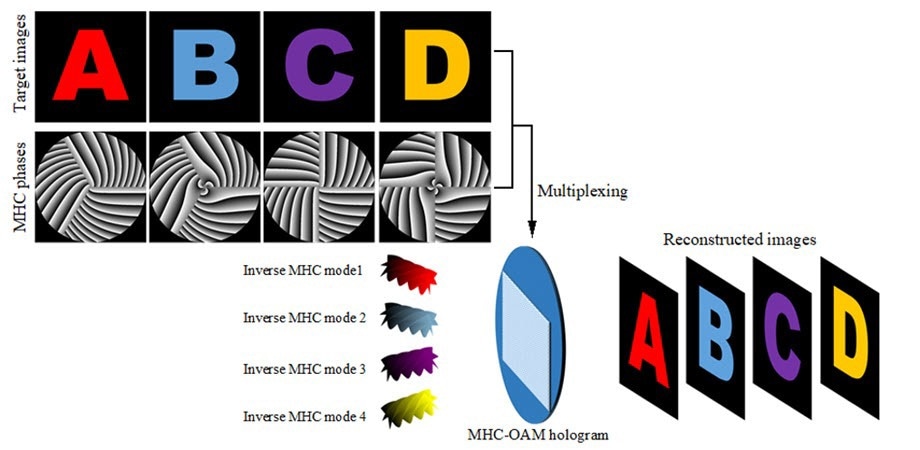A common technique for capturing and recreating the entire optical field information, including intensity and phase, is optical holography. Numerous industries, including optical display, imaging, data storage, encryption, and metrology, have found extensive uses for it. The necessity for greater coding freedom to address high-security and high-capacity concerns has become evident with the rapid development of the information society.

The MHC-OAM holography design relies on independently modulated MHC beam parameters, allowing for spatially arbitrary MHC beam waveforms and different types of MHC-OAM holography for effective information encryption and storage. Image Credit: N. Zhang, Soochow University
While several physical characteristics of light, such as wavelength, angle of incidence, polarization, and time, can function as separate information channels in holographic systems, the number of spatial channels is constrained.
Researchers have discovered new options in the orbital angular momentum (OAM) dimension of light after exhausting the physical dimensions that are now available for multiplexed holography.
Researchers have utilized OAM as an independent information carrier for optical holography, resulting in OAM multiplexed holography by sampling holograms suitably in momentum space. Due to OAM’s inherent orthogonality and endless spiral modes, this method provides optical information processing capabilities that have never before been possible.
Chinese academics from Soochow University have recently suggested a novel strategy called multi ramp helical conical OAM (MHC-OAM) to improve holographic multiplexing even more.
According to a report in Advanced Photonics Nexus, this method considerably increases the capability of holographic multiplexing by creating MHC beams with various properties that can be used as information encryption or decryption channels.
The design enables spatially arbitrary MHC beam waveforms and various MHC-OAM holography types by relying on individually modulated MHC beam characteristics.
Three additional parameters, the number of multi ramp mixed screw-edge dislocations, the normalized factor, and the constant of the MHC beam, can operate as carriers for information encoding and decoding in addition to the topological charge given by OAM.
Higher dimensional holographic multiplexing can be produced by combining the four MHC beam parameters in a unique way, which has the advantage of enhancing security.
Improved Security with Multidimensional MHC-OAM Hologram
The creation of sophisticated nested optical encryption platforms is made possible by the multidimensional MHC-OAM hologram, which offers additional security keys. This invention transforms outdated optical encryption technologies with low security or data capacity.
The encoded information becomes impenetrable to certain brute force attacks when MHC-OAM holograms are used to encrypt and decrypt optical information based on specified MHC modes. The optical encryption technique provides theoretically infinite information channels, satisfying the growing demand for parallel high-security data transmission.
The generic design approach of MHC-OAM multiplexed holography can be extended to achieve holographic multiplexing in higher dimensions, such as by combining the polarization and wavelength of light. This opens new possibilities for further enhancing information capacity and security in optical holography.
Xiao Yuan, Principal Investigator, Key Laboratory of Advanced Optical Manufacturing Technologies, Soochow University
Optical holography continues to evolve and fulfill the demands of the information age, with the possibility of infinite information channels and impenetrable encryption.
Journal Reference
Zhang, N., et al. (2023) Multiparameter encrypted orbital angular momentum multiplexed holography based on multiramp helicoconical beams. Advanced Photonics Nexus. doi:10.1117/1.APN.2.3.036013.